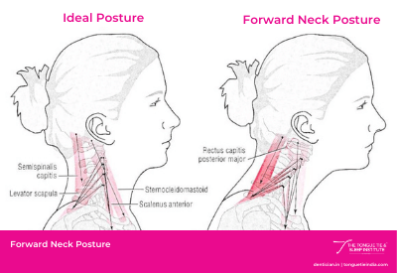A Temporomandibular joint disorder, also known as TMJ disorder, occurs in the temporomandibular joint; a joint which connects the skull to the jaw.
When the TMJ becomes injured or damaged, it can lead to TMD resulting in painful symptoms. TMJ disorder can lead to immense pain and discomfort, such as difficulty with chewing, pain in the jaw, and difficulty with clicking and locking the jaw joint. While there are several medical treatments available for the same, it is essential to get your symptoms checked and diagnosed by a trained TMJ expert.
It is important to recognize the signs, which will make it easier for you to consult a TMJ expert and avail early treatment before any complications arise. To help you identify the symptoms of TMJ disorder, we have put together the common signs that a person undergoes when suffering from TMJ disorder.

Frequent Migraines and Headaches
While occasional bouts of headaches are considered to be normal, waking up with a headache or migraine every single morning isn’t so. It is usually a sign of something being wrong. One of the causes of frequent headaches and migraines is TMD. According to a study, approximately 40% of patients diagnosed with TMD suffer from frequent headaches and migraines. Hence, if you find yourself suffering from migraines or headaches multiple times a week, ensure you schedule an appointment with a TMJ specialist and undergo a diagnosis.
Clicking or Popping sounds
Another sign of having TMJ disorder is when you open or close your mouth and hear a clicking or popping sound in your jaw. This clicking or popping sound is the sound of the disc inside the TM joint shifting out of position and creating an uncomfortable and loud sound.
Cracked, Worn, or Broken Teeth
When the jaw joints, teeth, and muscles don’t work in harmony, there is an imbalance in the bite. Moreover, when the top and bottom teeth don’t come together, this imbalance or misalignment can cause excessive pressure on certain teeth. This could lead to cracked, worn, or broken teeth.
Additionally, patients with TMJ disorders tend to clench or grind their teeth, which can also lead to cracked, worn, or broken teeth. When you visit a dentist for regular teeth cleaning, they can usually identify and see signs of wear and tear from grinding or clenching.
Ear Pain, Clogged Ears, and Tinnitus
Because the TM joint resides adjacent to the ears, it is usual to experience many ear-related TMJ symptoms. Patients can be prone to ear pain or clogged ears. Most individuals may pass this off as an ear infection or ear allergy. However, in reality, it may be a symptom stemming from TMD. Moreover, TMD can also cause tinnitus – ringing in the ears – due to nerve irritation. If you experience regular stuffiness, pain, or ringing in the ear, you should undergo a TMJ examination.
Shoulder, Neck, Jaw, Back and Head Pain
The last common symptom of having a TMJ disorder is a pain in several locations in your body. Most patients suffering from TMD experience pain in their jaw and on their heads, specifically in the temple area. However, pain can also occur in the shoulders and the neck. If you are experiencing any of these, it may make sense to read about the diseases that cause back pain.
Patients might also feel sinus or eye pain and pressure. This pain travels to all these different points because the TM joint is located near the nerves that connect to different points in the body. The muscles in the face are connected to the muscles in the neck and shoulders. When the TM joint is not working correctly, the pain can have a domino effect throughout the body.